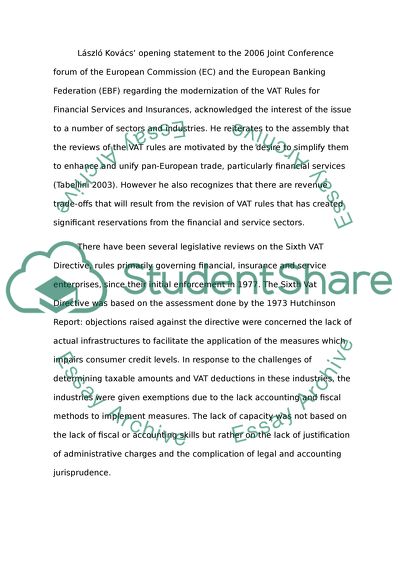Cite this document
(“Value Added Tax Essay Example | Topics and Well Written Essays - 2500 words”, n.d.)
Value Added Tax Essay Example | Topics and Well Written Essays - 2500 words. Retrieved from https://studentshare.org/law/1523104-value-added-tax
Value Added Tax Essay Example | Topics and Well Written Essays - 2500 words. Retrieved from https://studentshare.org/law/1523104-value-added-tax
(Value Added Tax Essay Example | Topics and Well Written Essays - 2500 Words)
Value Added Tax Essay Example | Topics and Well Written Essays - 2500 Words. https://studentshare.org/law/1523104-value-added-tax.
Value Added Tax Essay Example | Topics and Well Written Essays - 2500 Words. https://studentshare.org/law/1523104-value-added-tax.
“Value Added Tax Essay Example | Topics and Well Written Essays - 2500 Words”, n.d. https://studentshare.org/law/1523104-value-added-tax.


